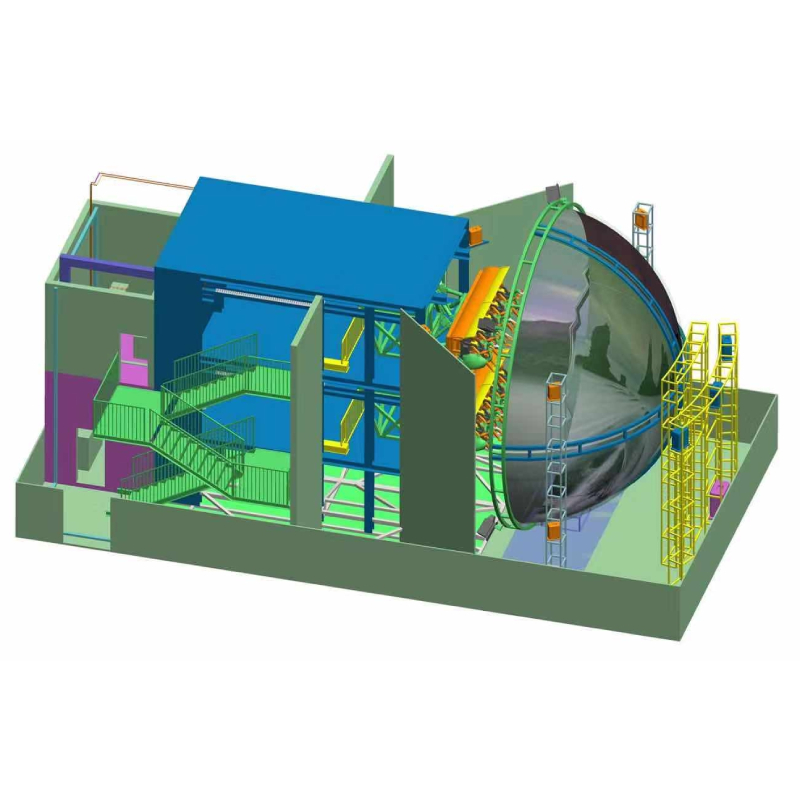- Albanian
- Arabic
- Belarusian
- Bengali
- Czech
- English
- French
- German
- Hebrew
- Hungarian
- Indonesian
- irish
- Italian
- Japanese
- kazakh
- Persian
- Russian
- Thai
- Uzbek
- Vietnamese
Explore All Types of Roller Coasters Find the Best Rides for Every Thrill Seeker
- Introduction to different types of roller coasters
and their evolution - Technical distinctions and engineering advancements in roller coaster designs
- Comprehensive comparison table of leading roller coaster manufacturers
- Customization capabilities and tailored experiences for amusement parks
- Case studies: real-world applications and success stories
- Safety innovations and industry standards
- Conclusion: Exploring all types of roller coasters—future trends and possibilities

(types of roller coasters)
Understanding Different Types of Roller Coasters
Roller coasters represent the pinnacle of amusement park attractions, captivating thrill-seekers with a blend of speed, height, and engineering ingenuity. As the appetite for more extreme experiences has grown, so too has the diversity and complexity of different types of roller coasters. The journey began with wooden coasters in the late 19th century, featuring simple "out and back" layouts. Today, the industry boasts an array of innovations, from steel behemoths breaking speed records to hybrid constructions that merge the best of both wooden and steel worlds. These rides are now classified not only by their material composition but also by track design, train configuration, launch systems, and rider experience. Understanding types of roller coasters is essential for both enthusiasts and park operators who wish to create compelling, safe, and marketable attractions.
Engineering Progress: Technical Advantages Driving Roller Coaster Evolution
The evolution in roller coaster engineering has brought significant advancements that cater to both performance and safety. With the advent of computer-aided design (CAD) and finite element analysis, designers now achieve highly precise track layouts, dynamic ride simulations, and innovative ride dynamics. Aerodynamics, material science, and the integration of magnetically launched systems like linear synchronous motors (LSM) have enabled smoother, quieter, and faster launches compared to traditional chain lifts. For instance, the tallest steel roller coaster, Kingda Ka, uses a hydraulic launch system to propel trains from 0 to 128 mph in 3.5 seconds, reaching a height of 456 feet.
Wooden coasters, long known for their rickety charm, have been revitalized with prefabricated track technology by companies like Intamin, resulting in smoother rides and reduced maintenance. Hybrid coasters leverage steel tracks on wooden supports, offering inversions and elements previously impossible for traditional wood designs. Suspended and inverted coasters deliver a unique sensation by hanging passengers below the track, while flying and dive coasters create immersive ride positions. Innovations like virtual reality integration and switch tracks further expand the thrill possibilities.
Vendor Comparison: All Types of Roller Coasters
Selecting the right manufacturer is pivotal for amusement parks aiming to deliver signature roller coasters. Major global vendors provide varying expertise, proprietary technologies, and customization capacities. The following table presents a data-driven comparison, showcasing manufacturer strengths, signature models, and technical statistics for different coaster types worldwide:
| Manufacturer | Distinctive Coaster Types | Notable Projects | Max Height (ft) | Max Speed (mph) | Custom Design Capability | Market Share (%) |
|---|---|---|---|---|---|---|
| Bolliger & Mabillard (B&M) | Inverted, Wing, Dive, Hyper, Floorless | Fury 325, Valravn, Silver Star | 325 | 95 | Extensive | 22 |
| Intamin | Giga, Mega, Launch, Wooden Prefab, Multi-Dimension | Kingda Ka, Millennium Force, Taron | 456 | 128 | Advanced | 19 |
| Rocky Mountain Construction (RMC) | Hybrid, I-Box, Raptor Track, Single Rail | Steel Vengeance, Iron Gwazi | 205 | 76 | Strong | 7 |
| Vekoma | Suspended Looping, Family, Motorbike, Flying Dutchman | Tron Lightcycle, Python | 220 | 65 | Full Customization | 12 |
| Mack Rides | Spinning, Launched, Water Coaster, BigDipper | Blue Fire, Helix | 161 | 62 | Flexible | 9 |
| Zamperla | Family, Kiddie, Thunderbolt, Volare | Coney Island Thunderbolt | 115 | 56 | Good | 8 |
| Great Coasters International (GCI) | Wooden Twister, Millennium Flyer, Family Wooden | Gold Striker, Mystic Timbers | 108 | 57 | Classic Expertise | 5 |
This comparison reflects the breadth of different types of roller coasters available in today's market. While B&M excels in smooth, high-capacity steel coasters, Intamin leads with extreme records and innovative launch systems. RMC has revolutionized hybrid coasters, while Vekoma and Mack cater to family-friendly and spinning variations.
Customization Options: Tailoring Roller Coaster Experiences
Beyond standard catalog models, top manufacturers offer profound customization to meet unique park visions and operational needs. Customization extends to track layouts—incorporating tight turns, multi-launch segments, and interactive elements—while also considering thematic integration with park environments. Parks may request branded trains, custom lighting systems, or unique ride profiles such as backward launches, vertical drops, or VR-enabled seats.
Technical customization can include optimizing footprint for limited land, increasing capacity through dual-loading stations, and enhancing comfort via ergonomic seat designs. For example, B&M and Intamin offer bespoke ride programming, and RMC can retrofit existing wooden coasters with hybrid technology, extending revenue-earning life cycles. Additionally, accessibility is prioritized, with low-transfer seats and adaptable restraint systems broadening the target demographic. Such flexibility ensures park differentiation and guest loyalty, while also allowing smaller parks to access signature ride experiences adapted to their budgetary and land constraints.
Application Cases: Transformation and Global Success Stories
Real-world installations highlight the transformative power of different types of roller coasters in diversifying park offerings and driving attendance. At Cedar Point, the debut of Steel Vengeance (RMC) resulted in a record-breaking opening day with park attendance increasing by 8% year-over-year. This hybrid coaster set new benchmarks for airtime and inversions on a wooden-steel track.
Europa-Park in Germany leveraged Mack Rides’ Blue Fire for their Iceland area, featuring a combination of high-speed launches and a smooth spinning experience, appealing to both thrill-seekers and families. Shanghai Disneyland's Tron Lightcycle Power Run (Vekoma) set a new standard in ride immersion, incorporating LED elements and unique ride vehicles, becoming the park's top-rated experience in multiple visitor surveys.
Meanwhile, traditional parks seeking rejuvenation—such as Lake Compounce in Connecticut—have modernized wooden coasters with magnetic brakes and retracking from GCI, boosting both performance and reliability. Across Asia and the Middle East, emerging markets have rapidly adopted multi-launch and spinning coaster designs to drive year-round attendance.
Innovations in Safety and Industry Standards
Modern roller coasters are shaped by stringent safety protocols and continuous monitoring. Advanced control systems feature real-time diagnostics, predictive maintenance alerts, and fail-safe redundancies to ensure every ride cycle meets international safety standards. Magnetic braking, sensor-loaded restraint checks, and automated dispatch systems are now standard at top-tier installations, helping to maintain incident rates at less than one per 20 million rides. According to IAAPA (International Association of Amusement Parks and Attractions), the safety index for fixed-site amusement rides in the U.S. is 0.8 injuries per million rides, consistently outperforming recreational sports activities.
Independent inspectors and annual certification, combined with daily operational checks, have positioned the industry as one of the safest entertainment sectors. Manufacturers continue to partner with regulatory bodies to update standards, ensuring compatibility with next-generation materials, higher G-force limits, and innovative guest-facing technologies.
Conclusion: Envisioning All Types of Roller Coasters—Future Trends
The panorama of types of roller coasters continues to expand, propelled by market demand, advancing technologies, and creative storytelling. Emerging trends include the expansion of compact launch coasters adaptable for urban settings, dynamic ride vehicles with synchronized media, and sustainable construction using eco-friendly materials. The integration of AI-powered ride control and immersive multimedia enhances personalization and interactivity for guests.
As parks compete globally, the importance of offering all types of roller coasters—embracing variety in design, theme, and sensation—remains more critical than ever. By partnering with forward-thinking vendors and leveraging technical customization, parks can ensure they not only meet but anticipate the desires of the next generation of thrill-seekers. Data from leading industry analytics forecasts that by 2030, the roller coaster market will reach $4.2 billion globally, underscoring the enduring appeal and commercial relevance of these attractions.
Ultimately, the exploration, innovation, and strategic deployment of these attractions continue to redefine amusement park experiences, setting new benchmarks in entertainment and engineering excellence for years to come.

(types of roller coasters)
FAQS on types of roller coasters
Q: What are the main types of roller coasters?
A: The main types of roller coasters include wooden, steel, hybrid, inverted, and spinning coasters. Each offers unique ride experiences based on their design and track structure.Q: How do wooden and steel roller coasters differ?
A: Wooden roller coasters use timber tracks and offer a classic, bumpy ride, while steel coasters use tubular steel tracks and enable smoother, faster, and more complex rides.Q: Are there unique types of roller coasters besides traditional ones?
A: Yes, there are suspended, flying, dive, and launched coasters, each providing different sensations and ride mechanics for thrill-seekers.Q: What distinguishes inverted roller coasters from other types?
A: Inverted roller coasters have the train running beneath the track, with riders’ feet dangling, delivering a unique experience compared to seated or standing coasters.Q: Can you list all types of roller coasters found at amusement parks?
A: Amusement parks feature various roller coasters, including wooden, steel, hybrid, inverted, spinning, suspended, flying, dive, launched, and stand-up coasters. Each type offers different thrills and visual experiences.-
City Ferris Wheel – Experience the Ultimate Ride with City Star Ferris Wheel ThrillJul.08,2025
-
Top Roller Coasters Manufacturers Custom Design & Safety GuaranteedJul.07,2025
-
Coaster Roller Coaster Ultimate Thrill Rides for All Ages High Roller ExperienceJul.07,2025
-
Best Roller Coasters Video Collection – Thrilling Rides & Log Flume AdventuresJul.07,2025
-
Extreme Rides Ultimate Extreme Thrill & Theme Park Rides for Adrenaline SeekersJul.06,2025
